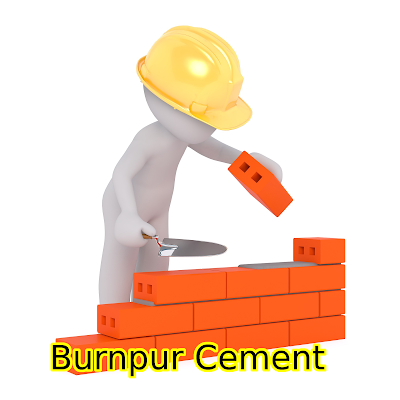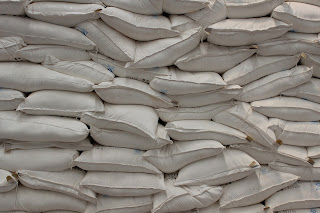Burnpur Cement Limited (BCL) is a Kolkata-based cement manufacturing company in India. Established in 1991, the company produces Portland Pozzolana Cement (PPC), Portland Slag Cement (PSC), and Ordinary Portland Cement (OPC) under the brand name "Burnpur Cement."
BCL has a state-of-the-art manufacturing plant in the Asansol district of West Bengal, with a capacity of 0.6 MTPA The plant is equipped with modern machinery and equipment that use advanced technology to manufacture high-quality cement. The company has invested heavily in research and development to improve the quality and durability of its products.
BCL has a well-established distribution network that covers most parts of Eastern India, including West Bengal, Jharkhand, Bihar, and Odisha. The company has also started exporting its products to Nepal, Bhutan, and Bangladesh.
BCL has a team of experienced professionals who ensure that the manufacturing process is efficient and sustainable. The company has implemented several measures to reduce its carbon footprint and minimize the impact of its operations on the environment. BCL is committed to maintaining the highest standards of safety and health for its employees and has implemented several safety measures to ensure a safe working environment.
BCL has received several awards and recognitions for its outstanding performance in the cement industry. In 2019, the company was awarded the "Best Brand Award" by the Economic Times, and in 2020, BCL received the "Company of the Year Award" by the Indian Chamber of Commerce.
Plants:
Asansol Plant
BCL started operations in the cement industry in October 1991 with a small cement plant of 30 TPD. The unit was set up in Asansol to produce Portland Slag Cement conforming to IS: 455. The production phase was ushered in with the commissioning of this Plant in October 1991. Expansion of facilities over the years has resulted in a capacity of 1000 TPD of cement making.
Patratu Plant
The company embarked on a backward integration project by putting up an 800 TPD Clinkerisation and Cement grinding unit at Patratu Industrial Area, Patratu District, Jharkhand, which is approximately 3.0 km away from Patratu Thermal Power Station and 10-15 km away from vast limestone deposits for manufacturing Ordinay Portlant Cement (OPC), Portland Pozzolona Cement (PPC) and Portland Slag Cement (PSC).
Burnpur Cement has entered into a second extension and amendment agreement with UltraTech Cement to extend and amend the terms and conditions of the offtake agreement and the first extension agreement entered earlier among them.
News from all over on Cement Markets, Cement Marketing, Sales Consulting, Marketing Consulting for the Cement Marketing Consultant, Cement Market Consultant.
Friday, March 24, 2023
Burnpur Cement Limited (BCL)
Tuesday, March 14, 2023
Ordinary And Specialty Cement: Types And Usage
Cement is a binding material that is used in the construction industry to make concrete. There are several types of cement available, each with its own unique properties and uses. Understanding the different types of cement and their applications is important for construction professionals, as it helps them make informed decisions about which type of cement to use in a given project.
Ordinary Portland Cement (OPC): This is the most commonly used type of cement, and it is made from a mixture of limestone, clay, and iron. It is widely used in construction due to its high strength and low cost.
Rapid Hardening Cement: This type of cement is designed to set and harden more quickly than ordinary Portland cement. It is commonly used in projects that require a rapid turnaround, such as road construction and bridge building.
Low Heat of Hydration Cement: This type of cement produces a low amount of heat as it sets, making it suitable for use in large concrete structures where the build-up of heat could cause cracking.
Sulphate Resistant Cement: This type of cement is resistant to the effects of sulphates, which are commonly found in soil and groundwater. It is commonly used in construction projects near the coast or in areas where sulphates are prevalent.
Blast Furnace Slag Cement: This type of cement is made from a mixture of blast furnace slag, limestone, and clay. It is known for its strength, durability, and resistance to fire and chemicals.
Portland Pozzolan Cement: This type of cement is made from a mixture of pozzolanic materials, such as fly ash or silica fume, and Portland cement. It is known for its low heat of hydration, making it suitable for use in large concrete structures.
Oil Well Cement: This type of cement is specifically designed for use in the construction of oil wells. It is known for its high resistance to heat and pressure, and its ability to set in the presence of oil and gas.
Colored Cement: This type of cement can be dyed to produce a range of colors, making it suitable for use in decorative concrete projects.
White Cement: This type of cement is made from pure materials, such as chalk and limestone, and it is known for its bright white color. It is commonly used in decorative concrete projects.
High Alumina Cement: This type of cement is made from a mixture of bauxite and limestone, and it is known for its high resistance to fire and chemicals.
Expansive Cement: This type of cement is designed to expand as it sets, making it suitable for use in construction projects where a high degree of movement is expected, such as in bridges and large concrete structures.
Air Entraining Cement: This type of cement contains small air pockets, which improve its workability and resistance to freeze-thaw cycles. It is commonly used in construction projects in cold climates.
Rapid Setting Cement: This type of cement sets very quickly, making it suitable for use in projects where a rapid turnaround is required.
Masonry Cement: This type of cement is designed for use in masonry work, such as bricklaying and stonework. It is known for its workability and high strength.
Geopolymer Cement: This type of cement is made from a mixture of industrial waste materials, such as fly ash and slag, and it is a more environmentally friendly alternative to traditional cement.
Monday, March 6, 2023
Different Grades of Ordinary Portland Cement
Ordinary Portland Cement (OPC) is a widely used type of cement that is produced by heating a mixture of limestone and clay to high temperatures in a kiln. There are different grades of OPC available, each with different properties and uses. The most common grades of OPC are 43, 53, and 33.
OPC 43 is a standard strength cement that is used for a wide range of construction applications, including buildings, bridges, and roads. It has an initial setting time of around 30 minutes and a final setting time of around 10 hours. The compressive strength of OPC 43 is typically in the range of 43 MPa, which is why it is referred to as 43 grade cement. This means that it can withstand a compressive force of 43 MegaPascals before it starts to crack or break.
OPC 53 is a high-strength cement that is used for high-stress applications, such as high-rise buildings and heavy-duty structures. It has a longer initial setting time of around 45 minutes, and a final setting time of around 12 hours. The compressive strength of OPC 53 is typically in the range of 53 MPa, making it stronger than OPC 43. This higher strength makes OPC 53 ideal for construction projects that require a high level of durability and strength.
OPC 33 is a lower strength cement that is used for less demanding construction applications, such as minor renovations and repair work. It has a shorter initial setting time of around 20 minutes, and a final setting time of around 6 hours. The compressive strength of OPC 33 is typically in the range of 33 MPa, making it weaker than OPC 43 and OPC 53. This lower strength makes OPC 33 more suitable for construction projects that do not require a high level of durability and strength.
In addition to these standard grades of OPC, there are also specialty grades of OPC that are used for specific construction applications. For example, rapid-hardening OPC is used for construction projects that require a quick setting time, while low-heat OPC is used for large concrete structures that are prone to thermal cracking.
In general, the choice of which grade of OPC to use will depend on the specific requirements of the construction project. Factors such as the type of structure, the size of the structure, and the environmental conditions will all influence the choice of cement grade.
It is also important to note that the strength of cement is not the only factor that determines its suitability for a construction project. Other factors, such as the setting time, workability, and durability, are also important considerations. The best choice of cement will depend on a range of factors, and it is always best to consult with a construction expert to determine the most suitable grade of cement for a particular project.
The different grades of OPC available, including 43, 53, and 33, each have different properties and uses. The choice of which grade to use will depend on the specific requirements of the construction project, and it is important to consider factors such as strength, setting time, workability, and durability. Consultation with a construction expert is always recommended to determine the best choice of cement for a particular project.


